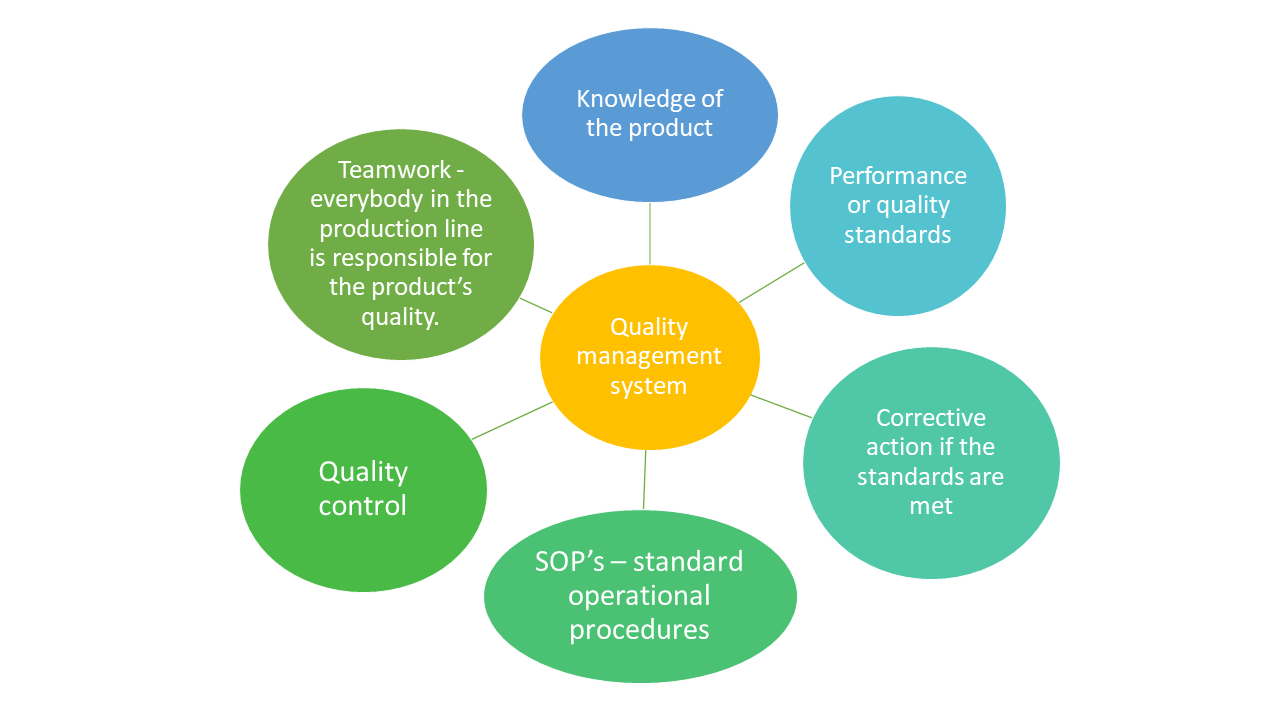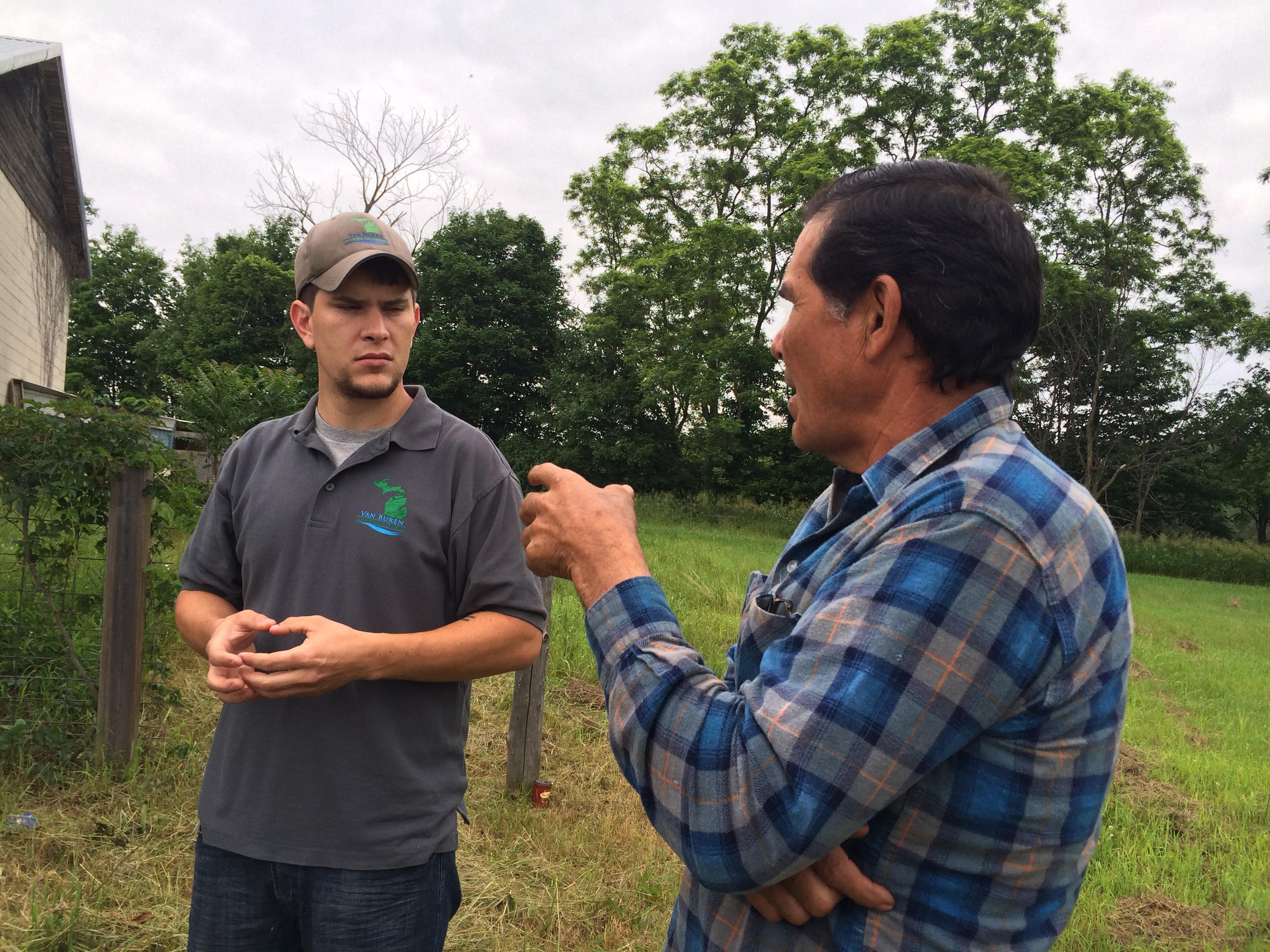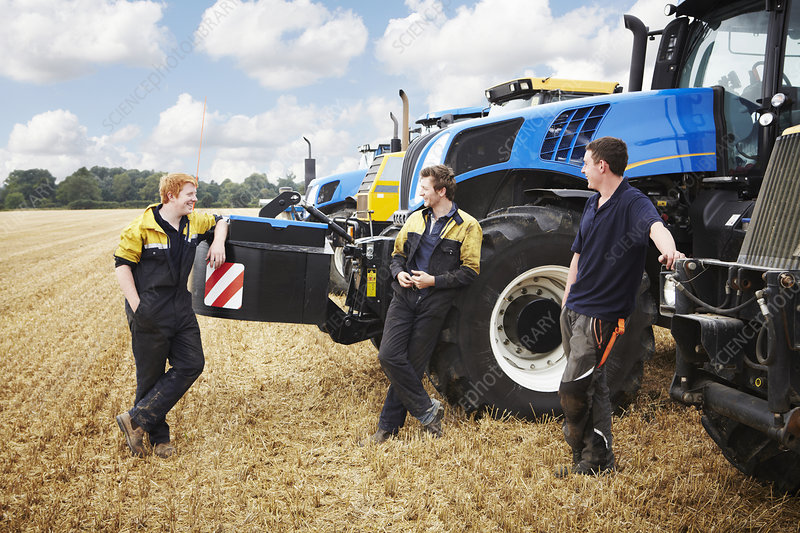Quality-Management System
There are various models available to use and each company will develop its own system or adapt a system to suit their needs. The following is necessary in a quality management system.

Knowledge of the Product
Everybody involved in the production process must be informed and aware of what exactly is expected for a product’s quality. It should be a team effort, and everybody involved in the process must get feedback regarding the achievement of their goals. Every worker in the process must thus take ownership of his\her work, knowing what their contribution will be in achieving a desired product.
Performance or Quality Standards
Every worker in an agricultural enterprise / business must know exactly what is expected from him\her and what standard of performance is required from them. To achieve this, the workers must have a clear job description and will be evaluated according to performance standards set for a specific job. They must receive feedback on areas of improvement and\or achievement. The workers must be informed about the consequences – a reward for good achievements or the ‘backdoor’ for poor performance.

Corrective action if the standards are met: If the staff member does not achieve the required standards of performance a counselling or retraining activity should be put in place where the staff member is informed of his /her short comings and how it should be corrected. The person must be given a time limit for the required improvement of standards and if that is not achieved a decision about further employment must be made.
SOP’s – standard operational procedures: There are standard operational procedures in every business that must in place to ensure that the product produced will be of the required quality and standards. The person in charge of these procedures must be aware of these activities and must ensure that they are done timely and without fail.
The following example can be used to illustrate the concept:
|
Activity |
SOP |
|
Cultivation of Vegetables |
Correct seedbed preparation Planting of plants or seeds Irrigation – scheduling, cleaning of filters Fertilisation Testing of water quality Disease control - preventative program Picking and treatment of products |
|
Raising of calves |
Take away from mother after 12 hours Make sure it took in sufficient colostrum in first 12 hours Daily feeding according to program Inoculations according to program Cleaning of the pens on daily basis Protection against colds or drafts |
Quality Control
It is the duty of the manager or the supervisor to control the quality of work and the quality of the product produced. In some instances, a person will be appointed with the main function of quality control and must then ensure that the desired quality is produced, and standards are maintained.
Some quality control systems start with the individual worker to control him\her and aim at improvement of his work. This can be achieved with recognition of excellent work. The supervisors, at different levels, are responsible for the quality control to ensure that the agreed desired outcome is achieved within the funds limits and at the lowest cost.
Teamwork
Everybody in the production line, from the worker on the land to the manager or the farmer, is responsible for the quality product needed. Everybody must understand the concept of quality control and the part they play in achieving this goal. The workers, as a team must get regular feedback (e.g. Monday morning meeting) on successes – ‘worker-of-week\month – or shortcoming and where improvements are needed. A worker must get credit for work well done to either boost his\her ego or urge them to keep on with the good work.
The team will also share in the success if the goals are achieved. It is very important that everybody involved in the process feel that their contribution, how small it may be, is appreciated and valued. Workers should also be encouraged to make suggestions or proposals to improve the production process or quality to let them feel important and part of the team. Corporate clothing, brand name and team building activities at the start or the end of the production cycle can contribute to team building. The end result - the farming unit as a whole will benefit by establishing a name or brand name on the market, resulting into higher demand and thus higher prices.
